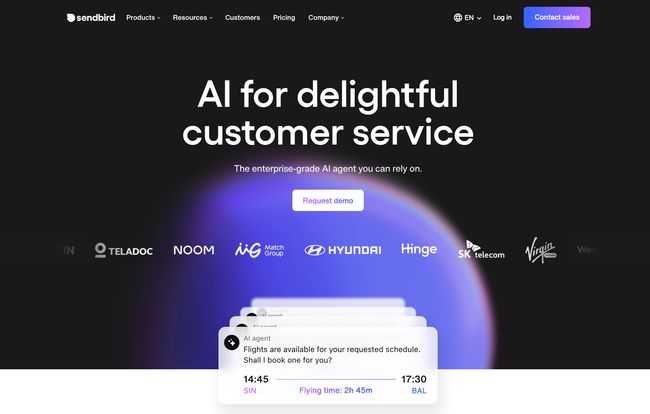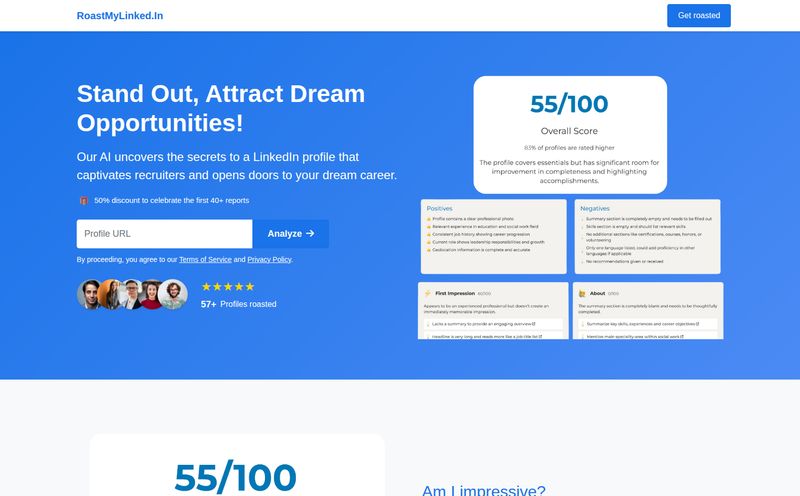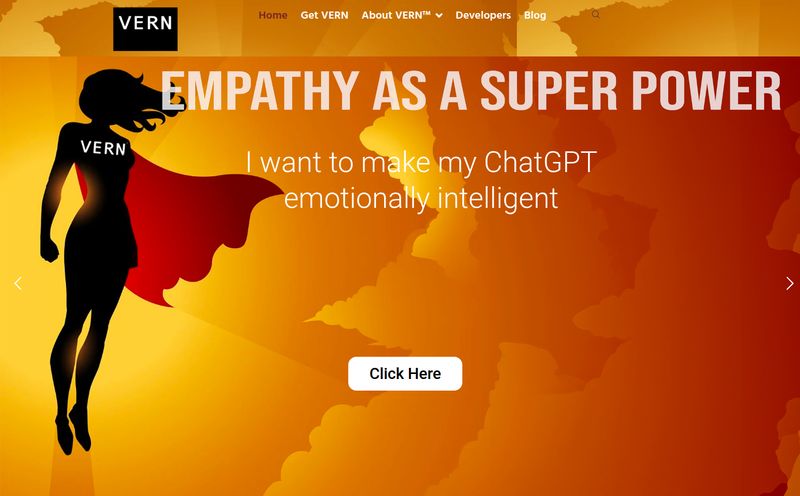For years, we’ve been promised a future of automated, AI-driven customer support that’s both efficient and, you know, not infuriating. We’ve all been there—stuck in a loop with a chatbot that only knows three phrases, desperately typing “talk to a human” like it’s a magic spell. As someone who’s spent years neck-deep in traffic generation and user experience, I’ve seen more “revolutionary” AI tools than I can count. Most of them are just glorified FAQ pages with a blinking cursor.
So when I started digging into Sendbird’s AI platform, my default skepticism was fully engaged. But the more I looked, the more I realized this might be... different. It’s not just another plug-and-play chatbot. It’s positioned as an entire AI workforce that your human team can actually lean on. A pretty bold claim. Let’s see if it holds up.
So, What Exactly Is Sendbird AI?
At its core, Sendbird offers a platform to build and deploy your own custom AI agents. Think of it less like buying a pre-made tool and more like getting a sophisticated LEGO set for constructing your ideal customer support and sales team. These aren’t just web chat bots, either. The whole pitch is built around omnichannel support. Your AI agent can handle conversations seamlessly across your mobile app, website, SMS, and even email.
This is a bigger deal than it sounds. One of the biggest friction points in customer service is channel-switching. A customer starts a chat on the website, has to switch to email, and then has to repeat their entire life story to a new agent. Sendbird aims to kill that problem by creating a unified command center for all your customer conversations, powered by AI that has the full context. It’s about meeting your customers where they are, without making them do all the work.
The Features That Actually Move the Needle
A feature list is just a feature list until you see how it solves a real problem. Here’s what caught my eye.
The Omnichannel AI Engine is the Heart of It All
I mentioned this already, but it’s worth repeating. Building one great AI agent is hard enough. Building one that works consistently across every channel your customers use is the holy grail. By unifying these conversations, you’re not just improving efficiency; you’re building a cohesive brand experience. It’s the difference between a fragmented, disjointed process and a smooth, intelligent one.
You Can Build Your Own AI Army (No PhD Required)
Sendbird provides an AI agent builder that promises to be accessible. This is where you create, test, and evaluate your agents' performance. The idea is to empower your team to build the exact conversational flows you need without having to bring in a team of machine learning specialists for every little change. This agility is critical because customer needs and business priorities change. Fast.
Security That Big Companies Trust
Okay, this part is huge. Sendbird doesn’t just wave its hands and say “we’re secure.” They come with the receipts: SOC 2, ISO 27001, and HIPAA compliance. For anyone in healthcare, finance, or any enterprise-level business, this isn't a nice-to-have; it's a non-negotiable. Putting your customer conversations through a third-party platform requires an immense amount of trust, and this level of compliance is how you earn it.
Proof is in the Pudding: The Big Names Using Sendbird
You can talk a big game, but the real test is who’s willing to bet their customer experience on your platform. Sendbird boasts an impressive client list, including giants like Hyundai, Virgin Mobile, Hinge, and NOOM. These aren't small startups; they're massive companies where a customer service failure can make headlines.
And the results seem to back it up. They claim NOOM achieved a 96% CSAT score with their help. Hinge apparently cut its first response time by 30%. These aren't just vanity metrics; they represent real money saved and real customer frustration avoided. When a company like Hinge, whose entire business is built on facilitating good conversations, trusts you with their user interactions, you must be doing somethign right.

Visit Sendbird
Let’s Talk Money: The Sendbird Pricing Puzzle
Alright, the all-important question: what’s it going to cost? Sendbird’s pricing is where things get interesting. They use a consumption-based model. In simple terms, you pay for what you use—primarily based on the number of monthly active users interacting with the service.
Now, I’ve always had a love-hate relationship with consumption-based pricing. On one hand, it’s fair. You’re not paying for shelfware. On the other hand, it can be unpredictable and lead to a nasty surprise on your bill if you have a sudden spike in traffic. Sendbird tries to counter this fear by talking about “predictable, transparent pricing” and, most importantly, no per-agent fees.
That last point is a game-changer. Traditional SaaS often charges per seat, which punishes you for growing your team. By eliminating that, Sendbird encourages you to scale your AI workforce to handle as much as possible without your bill skyrocketing. It’s a philosophical shift: you’re paying for the outcome (resolved customer issues), not the number of digital bodies you throw at the problem.
One thing to note: there’s no free trial. To get started, you have to book a personalized demo. This is a classic enterprise sales move. It tells me they’re not trying to attract casual tire-kickers; they want to engage in a serious conversation with businesses that have a significant problem to solve.
The Human Touch in an AI World
Maybe the most compelling part of Sendbird’s offering is its acknowledgment that AI can’t do it all. They put a strong emphasis on two things:
- Seamless AI-to-Human Handoff: The AI is designed to handle the high-volume, repetitive queries. But the moment a conversation gets too complex, emotional, or requires a human touch, it can be seamlessly passed to a live agent who has the full context of the AI's conversation. This is the perfect partnership.
- White-Glove Support: They talk about a “dedicated professional services team” and “tailored SLAs.” This isn’t a self-serve platform where they throw you the keys and wish you luck. It sounds more like a partnership, where their team helps your team get the most out of the platform. For enterprise clients, this hands-on support is invaluable.
FAQs About Sendbird AI
- How does Sendbird AI actually work?
- It's a platform that lets you build, train, and deploy your own AI agents. These agents can then handle customer conversations across multiple channels (web, mobile, SMS), answer questions, and perform tasks autonomously. It integrates with your existing systems to pull and push data.
- Is Sendbird secure enough for a large business?
- Yes. It’s built with enterprise-grade security and is compliant with major standards like SOC 2, ISO 27001, and HIPAA, making it suitable for businesses in sensitive industries like finance and healthcare.
- What is Sendbird's pricing model?
- Sendbird uses a consumption-based pricing model, typically based on monthly active users. A major benefit is that there are no per-agent fees, so you can scale your AI support without being penalized for each new 'seat'.
- Can Sendbird's AI agents talk to my other tools?
- Yes, integration is a key part of the platform. The AI agents are designed to connect with your existing tools and backend systems to provide more accurate and helpful responses.
- Is there a free trial for Sendbird AI?
- No, Sendbird does not offer a free trial. Instead, they provide a personalized demo to walk you through the platform and see if it's a good fit for your specific needs.
- Who should use Sendbird's AI platform?
- It's primarily aimed at mid-market to enterprise-level companies that are dealing with high volumes of customer inquiries and want a scalable, secure, and omnichannel solution for customer support and engagement.
My Final Verdict on Sendbird
So, is Sendbird the AI that finally delivers on the promise of better customer service? It’s the closest I’ve seen in a while to a platform that gets it. It's not a silver bullet, and it requires a real commitment to set up properly. But its focus on omnichannel consistency, enterprise-level security, and a smart partnership between AI and human agents is absolutely the right approach.
For a small business just starting, it might be overkill. But for an established company feeling the pain of scaling their support team and battling rising costs, Sendbird presents a very, very compelling case. It’s a serious tool for a serious problem, and it might just be the thing that lets your human team get off the hamster wheel and back to doing what they do best: being human.



